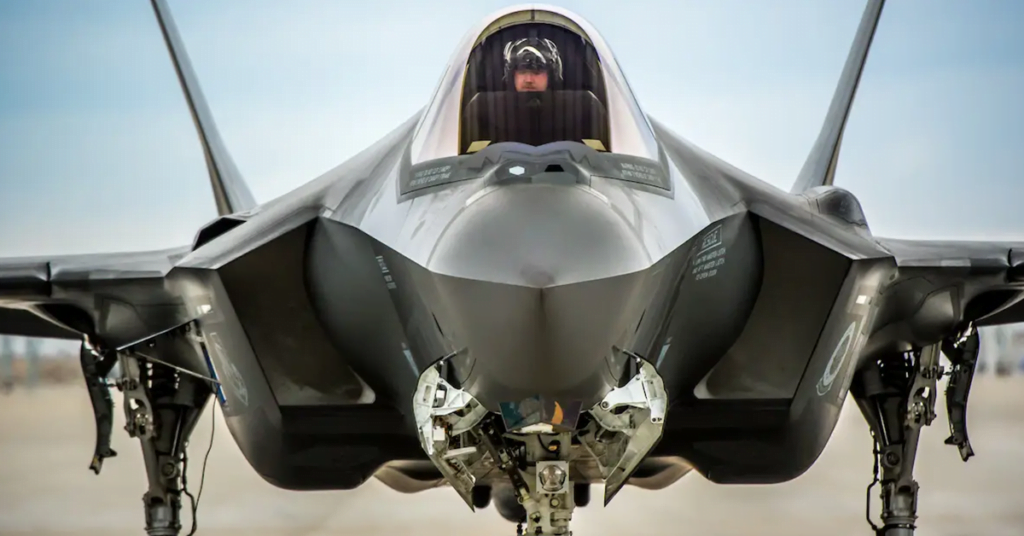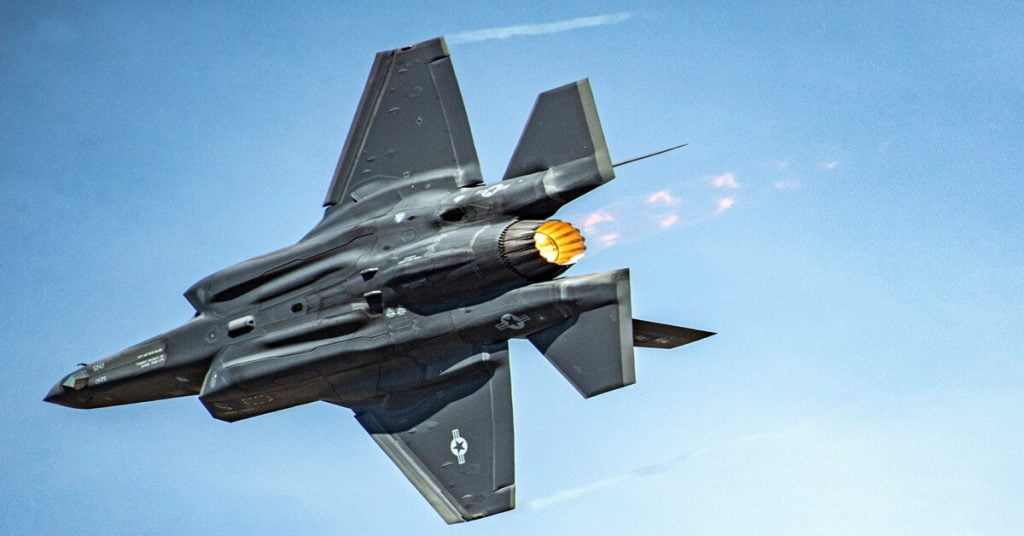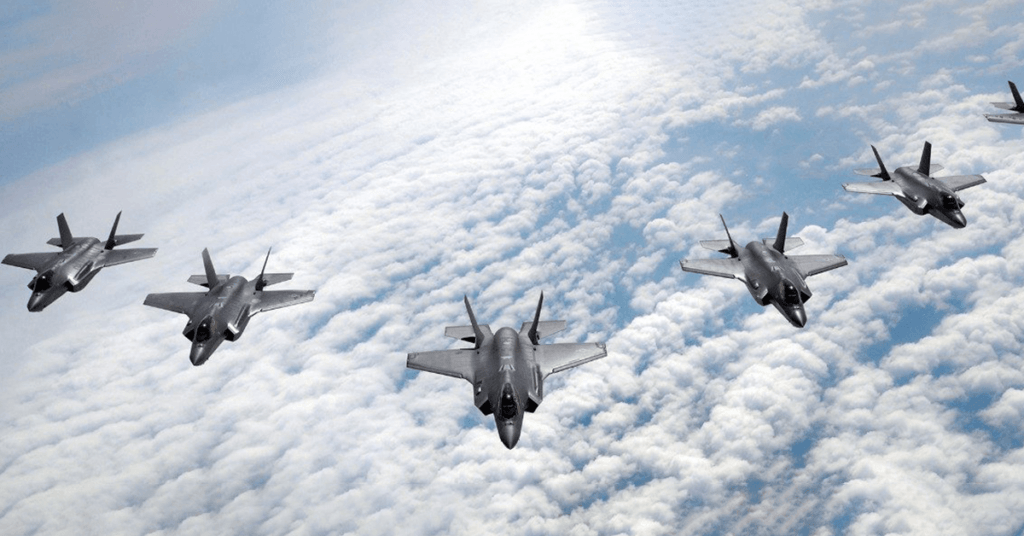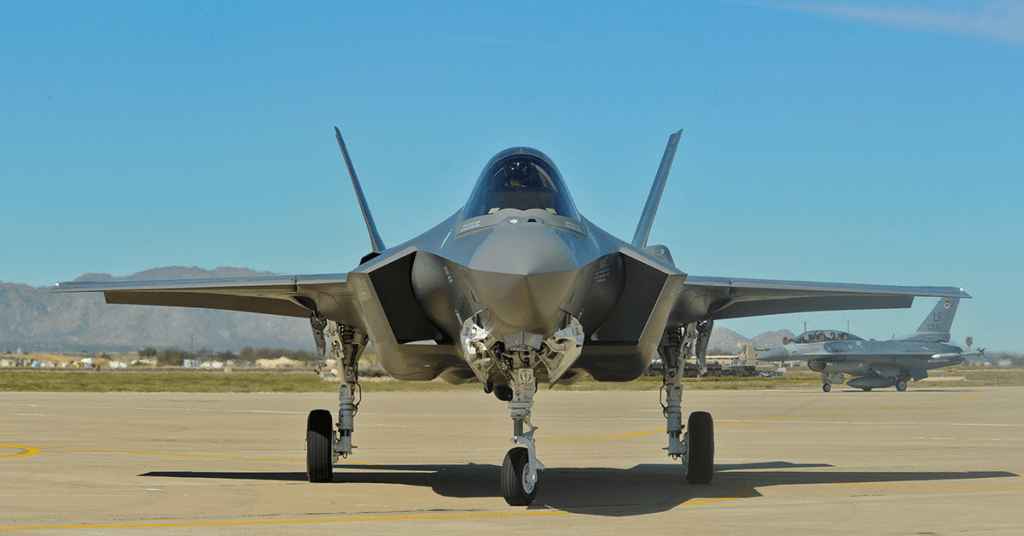Don’t miss the chance of joining the 10th Annual Defense R&D Summit where every talks about latest developments in cutting-edge technology for the U.S. military. Witness key defense leaders, researchers, experts and decision makers convene and discuss matters relevant to national security. Or become a member of the Potomac Officers Club to gain access to all upcoming government contracting events.
Step inside the cockpit of the F-35 Lightning II and strap in for a journey into the future of aviation technology. As you buckle up, get ready to experience the cutting-edge marvel that is the F-35, boasting stealth and agility advantage, and lethality.
This article will unravel the technological prowess behind this state-of-the-art fighter jet. It gives you a firsthand look at the advanced systems and innovations that make the F-35 a dominant force in the skies.
Experience the power, precision, and ingenuity that define this extraordinary aircraft, and prepare for a thrilling ride into the future of air superiority. From sophisticated sensor fusion to adaptive flight control systems, be amazed by the seamless integration of human and machine with pilots pushing the boundaries of aerial combat.
The advanced technology behind the F-35 Lightning II
Designed to take the place of the country’s aging jet fighter inventories, the F-35 series is built with next-generation technology. With enhanced stealth capabilities, this fighter jet will solve the inadequacies and obsolete features of the existing war air machines. These are coming from the inventories of the U.S. Air Force, the U.s. Navy, and Marine Corps.
The F-35 Lightning II delivers an unparalleled advantage for U.S. military pilots, and global partners as it is the most advanced convergence in the 21st Century Security network vision. It is the National Defense Strategy in motion and stands as the cornerstone of not only for the U.S. Services Fighters Fleet. It involves allied fleets worldwide.
The F-35 Lightning II is an advanced technological weapon used by the U.S. Military including military contingents in several countries. Here, we provide you with its cutting-edge features and key characteristics to give you an idea on how an efficient fighting machine it is.
Key features of the F-35 Lightning II

Takeoff and landing
The F-35 are three-variant single-seat, single engine jets. The first variant has conventional take-off and landing (CTOL) while the F-35B is the aircraft-carrier type (CV). The F-35C is the short-takeoff/vertical landing or STOVL variant. Other than that, they all have the same performance characteristics and advanced avionics.
Advanced sensor package
This feature collects, combines, and distributes information more than any other fighter planes in history. It gives its operators a decisive edge over adversaries. At the same time, it has an open architecture, processing power, and information fusion.
Added to that, there are flexible communication links and sophisticated sensors. This makes it indispensable for homeland defense, major combat, and Joint/Coalition irregular warfare operations in the future.
Autonomic Logistics Information System (ALIS)
Aside from unmatched reliability levels plus maintainability, the F-35 comes with a support and training system that’s highly responsive. It has the latest information technology known as the Autonomic Logistics Information System (ALIS).
The ALIS integrates the following:
- operational parameters
- current configuration
- current configuration
- component history
- scheduled upgrades and maintenance
- predictive diagnostics and health management
- Training
- operations scheduling
- mission planning and aircraft service support
The ALIS integrated features help so much in the technological advancement of the aircraft.
Electro-Optical Distributed Aperture System (DAS)
 U.S. Air Force Maj. Kristin Wolfe performs a demonstration in the F-35A Lightning II during at the Reno Air Races in Reno, Nevada, September 19, 2021. The F-35 Lightning II Demonstration Team is based out of Hill Air Force Base, Utah. (U.S. Air Force photo by Tech. Sgt. Nicolas Myers)
U.S. Air Force Maj. Kristin Wolfe performs a demonstration in the F-35A Lightning II during at the Reno Air Races in Reno, Nevada, September 19, 2021. The F-35 Lightning II Demonstration Team is based out of Hill Air Force Base, Utah. (U.S. Air Force photo by Tech. Sgt. Nicolas Myers)
In essence, this feature provides pilots a sense of situational awareness for advanced missile warning, using day and night pilot vision. It also has Electro-Optical Targeting System (EOTS).
This internally-mounted system allows for extended range detection. Added to that, it provides accurate targeting versus ground targets and air-to-air threats.
Helmet-mounted display
All intelligence plus targeting information required to complete a mission are displayed on the helmet’s visor. Hence, there is no longer a need for the pilot to go over the dashboard to check which switch he is going to click for the next steps.
Advanced tactical data links
Basically, this special feature allows for secure sharing of information among pilots in flight, as well as surface and ground platforms. This unmatched coalition interoperability could lead allied defense communities toward migration of future net-centric fighting forces.
The F-35 engine
The engine boasts to generate 43,000 lbs of thrust that includes:
- 6-stage compressor
- high-pressure single-stage turbine
- annular combustor
- 3-stage fan
- low-pressure 2-stage turbine
Mission system integration
This feature provides F-35 pilots with positive target identification and precise all-weather strike capabilities. These and extraordinary over-the-nose visibility features dramatically enhance pilots’ performance.
General Characteristics of the F-35 Lightning II
Prime Contractor: Lockheed Martin
Function: Multirole fighter
Power Plant: One Pratt & Whitney {F135-PW-100 turbofan engine)
Tail Span (horizontal): 22.5 ft /6.86 m
Wingspan: 35 ft
Wing Area: 460 sq ft/42.7 sq m
Thrust: 43,000 lbs
Length: 51 ft (15.7 m)
Height: 14.4 ft (4.38 m)
Empty weight: 29,300 lbs
Takeoff Weight: 70,000 lb class (max)
Fuel Capacity: Internal: 18,498 lbs
Payload: 18,000 lbs (8,160 kgs)
Speed: Mach 1.6 or 1,200 mph
Range: 1,350+ mi with internal fuel (1,200+ nm), unlimited with aerial refueling
Ceiling: Over 50,000 ft (15 kms)
Armament: Internal/external capability. Munitions vary depending on mission requirements (25 mm GAU-22/A; 2x AIM-120C; 2x GBU-31 JDAM)
Number of crew: 1
Training and simulation for F-35 pilots

On average, preparing pilots for the first time takes 192 hours of training. Almost half of the number of qualifying flights needed to become a pilot for this aircraft is conducted via a simulator. This is one unique training process in modern aviation. By using high-fidelity simulation, pilots can seamlessly transition from simulated trainer to jet.
The F-35 Full Mission Simulator is fully immersive and uses software just like the jet’s. It includes sensor and full weapons simulation. To make sure pilots are ready for future missions, they train for a wide range of simulated air-to-ground and air-to-air. Additionally, electronic warfare missions training is included.
What happens at the end of F-35 Lightning II training?
From Day 1 to the final flight, Lockheed Martin expert trainers work closely with pilots coming from all military services and countries that are part of the F-35 program. This is one way of ensuring all skills are mastered and every flight is safe.
After graduating from the F-35 training program, these pilots have to come back to the simulator for additional training, to prepare for missions as required. Simulations reduce manual training cost and the wear and tear to the jets.
The F-35 has 5th-generation capabilities like stealth, sensor fusion, advanced sensors, and networking. Thus, pilots are required to master new competencies every once in a while.
With simulation training, Lockheed Martin is redefining how pilots are educated on the range of expertise. This is critical in maximizing F-35 capabilities and to make sure flights are conducted safely at all times.
How many pilots have trained for the F-35 Lightning II?
Just recently, the list of pilots trained for this aircraft number around 2,000 (or more), with 14,000 maintainers who have undergone training from 10 countries. These include graduate pilots and maintainers from the US, the UK, Denmark, the Netherlands, Israel, Sweden, Norway, South Korea, Japan, and Australia.
Currently, there are 24 training bases and growing come year 2025, with more trained F-35 pilots and maintainers.
Future developments and upgrades for the F-35

Additional computational power brought by the Vehicle Management Computer (VMC) is being developed for the F-35 joint strike fighter (JSF). The VMC will enable enhanced control modes to improve efficiency and safety of the mission. This is part of the ongoing efforts to upgrade the jet’s platform within its service life.
BAE Systems’ quad-core next-generation processor for vehicle management was successfully tested during an F-35 Lightning II aircraft flight. Testing the VMC was done at Edwards Air Force Base and Naval Air Station Patuxent. It demonstrated an upgrade that was intended to maximize computer performance and address obsolete issues.
Partnering with F-35 programme leader Lockheed Martin, BAE Systems provides the VMC, active inceptor control system, electronic warfare system, and aft fuselage for every F-35 found in manufacturing facilities in the US, the UK, and Australia.
“The VMC provides the high integrity processing required to implement the advanced control algorithms that enable this platform’s critical missions,” – Corin Beck, BAE Systems’ Director of Military Aircraft Systems for Controls and Avionics Solutions.
Mr. Beck further highlighted that the said upgrade leverages BAE Systems technology’s path towards ensuring advancement of the jet’s mission management, including flight control capabilities not only today but into the future.”


